Waldemar Tatarczuk, a curator of the “Operations on places” exhibit, brought the city of Lublin to Petach Tikva situated near Tel Aviv, Israel. The director of the Labirynt Gallery ‘jammed his own town’ into a suitcase and headed to the Okęcie Airport in Warsaw. The things, which he couldn’t fit in, were saved on memory sticks or sent via WeTranfer. On his way over, he fetched notable performers and a couple of young promising artists – not only Adina Bar-On, a precursor of performance art in Israel, or Mirosław Bałka, represented by the Dvir Gallery in Tel Aviv, but also Robert Kuśmirowski, Cezary Bodzianowski, Arutiun Sargsyan and Nice Words duo (Barbara Gryka and Agata Rucińska). “Operations on places” opened on the 8th of November in the Petach Tikva Museum of Art. The exhibit conjured up the image of the city through the acts of performance enacted in the public space. The unadorned presentation builds a multifaceted narrative that can be interpreted as the universal tale about any metropolis whatsoever; a fragmented, subjective history of Lublin itself, as well as the nature of performance and site-specific art as such. To some extent, Lublin becomes a case-study, an urban palimpsest of mapping, rewriting and overwriting meanings, constructing and deconstructing, human interactions and exchanges of ideas or assets.

Poster of the exhibition ‘Operations on places’ in Petach Tikva Museum of Art
The Petach Tikva Museum of Art has been often dismissed as a provincial art gallery, a backyard hut or storage room as compared to Tel Aviv. Since several years ago Drorit Gur Arie took over as the gallery’s director, the institution has been thriving and gathering momentum until it was widely recognised as one of the most prominent contemporary art centers in the country. Nowadays, Petach Tikva welcomes various artists from all over the world. Interestingly enough, Tatarczuk’s own exhibit is organised on the territories of the very first Jewish settlement founded in Israel by the natives of the Eastern regions of Poland (mainly Białystok and Lublin). Now, its high time its contemporary embodiment returned to Israel.
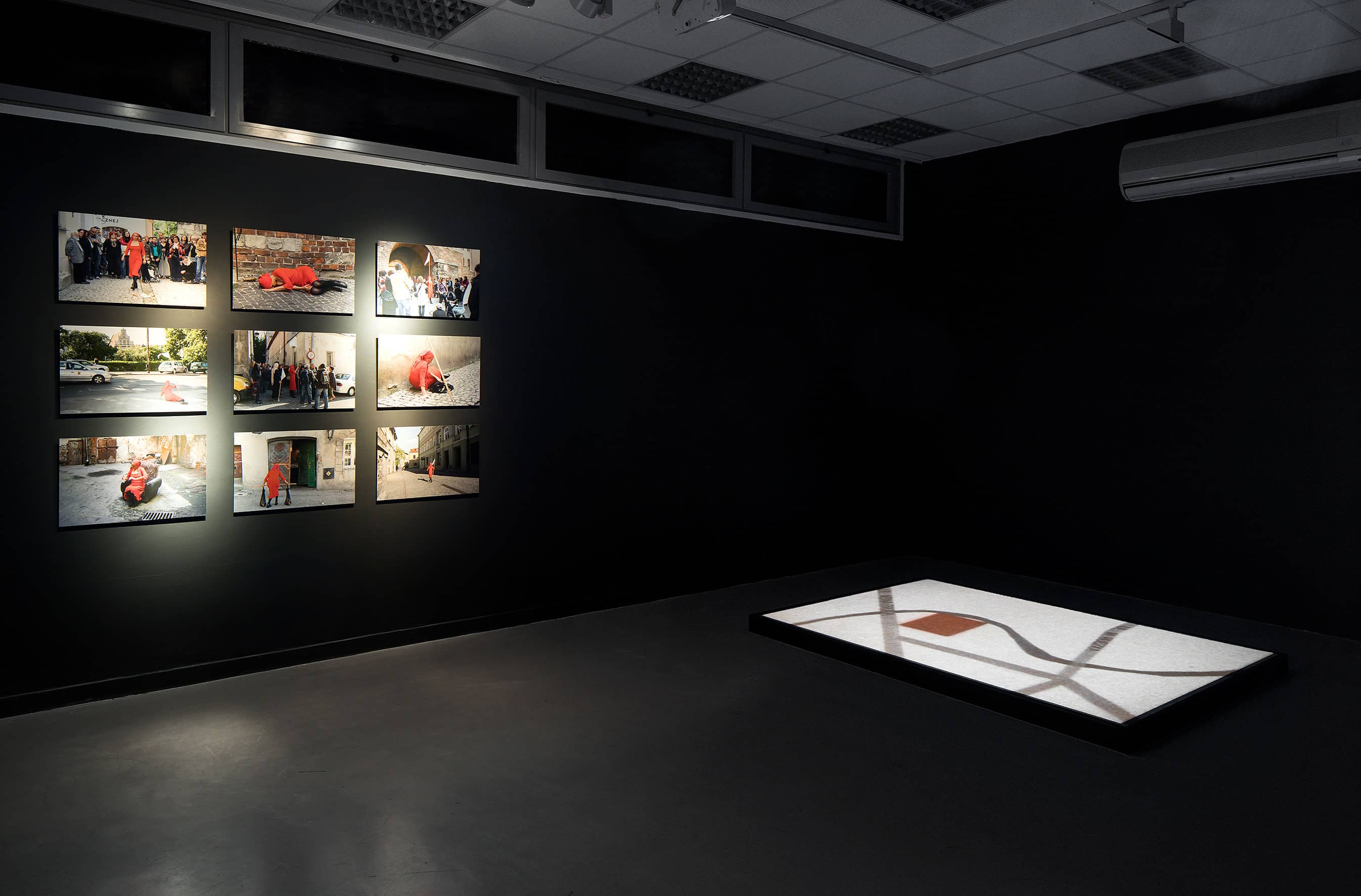
View from the exhibition ‘Operations on places’, on the left: ‘Dispositions’ Adina Bar-On, on the right: ‘MapL’ Mirosław Bałka, photo: Elad Sarig, courtesy of the Petach Tikva Museum of Art
A vast majority of artworks displayed on the exhibit included performance pieces (or video documentations thereof). This selection was by no means accidental – Lublin is hailed as the Polish (and European) capital of performance art, which by the way corresponds with the curator’s own area of artistic interests. It was the city of Lublin that hosted the very first festival dedicated to performance in Poland (Performance and Body in the Labirynt Gallery, 1978) and provided the stage for the trailblazing pieces of the male and female artists from the 1970s. Currently, artists’ interventions in the public space are part of the festival programmes of Performance Platform, Performance Art Meeting and Open City in Lublin.

View from the exhibition ‘Operations on places’, on the left: ‘MMXVI’ Arutiun Sargsyan, straight: ‘Dispositions’ Adina Bar-On, photo: Elad Sarig, courtesy of the Petach Tikva Museum of Art
A darkened gallery space was accessible only through the narrowing tunnel reminiscent of binoculars, magnifying glass or gateway to the city. The video featuring a performance by Arutiun Sargsyan, an Armenian artist who graduated from the Arts Department in Lublin, was screened at the end of the tunnel. His work entitled “MMXVI” referred to the ubiquitous acts of terrorism that occurred in the eponymous year transcribed in the Roman numerals. Through straightforward in form, the performance Lublin conveyed the dualism of the powerful and powerless in relation to the overwhelming news cycle of the media by means of a series of “iconic” performative gestures – the artist wearing a suit was sitting barefoot in the busy Teatralny Square in Lublin, his eyes covered with a white blindfold. Artutiun’s performance has a universal quality to it. It’s safe to say, its reception – or a lack thereof, since pedestrians sweeping by didn’t pay much attention to the artist’s activity – would be rather similar regardless of a performer’s location.

Entrance to the exhibition ‘Operations on places’ in Petach Tikva Museum of Art, photo: Elad Sarig, courtesy of the Petach Tikva Museum of Art
According to a curator’s statement, the point of departure for the exhibit was Mirosław Bałka’s short video entitled “MapL.” Shot against the backdrop of the concentration camp in Majdanek, a seemingly abstract celluloid image brings to mind the paintings of the Russian constructivists due to the extreme close-ups of the city’s map which trace the intersecting black lines denoting the streets, as well as the black and red rectangles, the Holocaust’s memorial sites. The artist stages a private yet detached performance referring to the plight faced by the Jewish community in Lublin during the war. This evocative juxtaposition augments the work’s resonance. Furthermore, no other piece included in the exhibit addresses directly the act of mapping the city or fleshing out its topography. The remaining “operations on places” and their locations draw on Bałka’s own map, which in this case was projected on the pedestal filled to the brim with coarse salt. Bałka often incorporates this natural highly symbolic mineral into his works of art. All in all, his video is a bold and painful statement made at the very center of the exhibit devoted to the Polish city which most Jews tend to associate with the war and concentration camps.
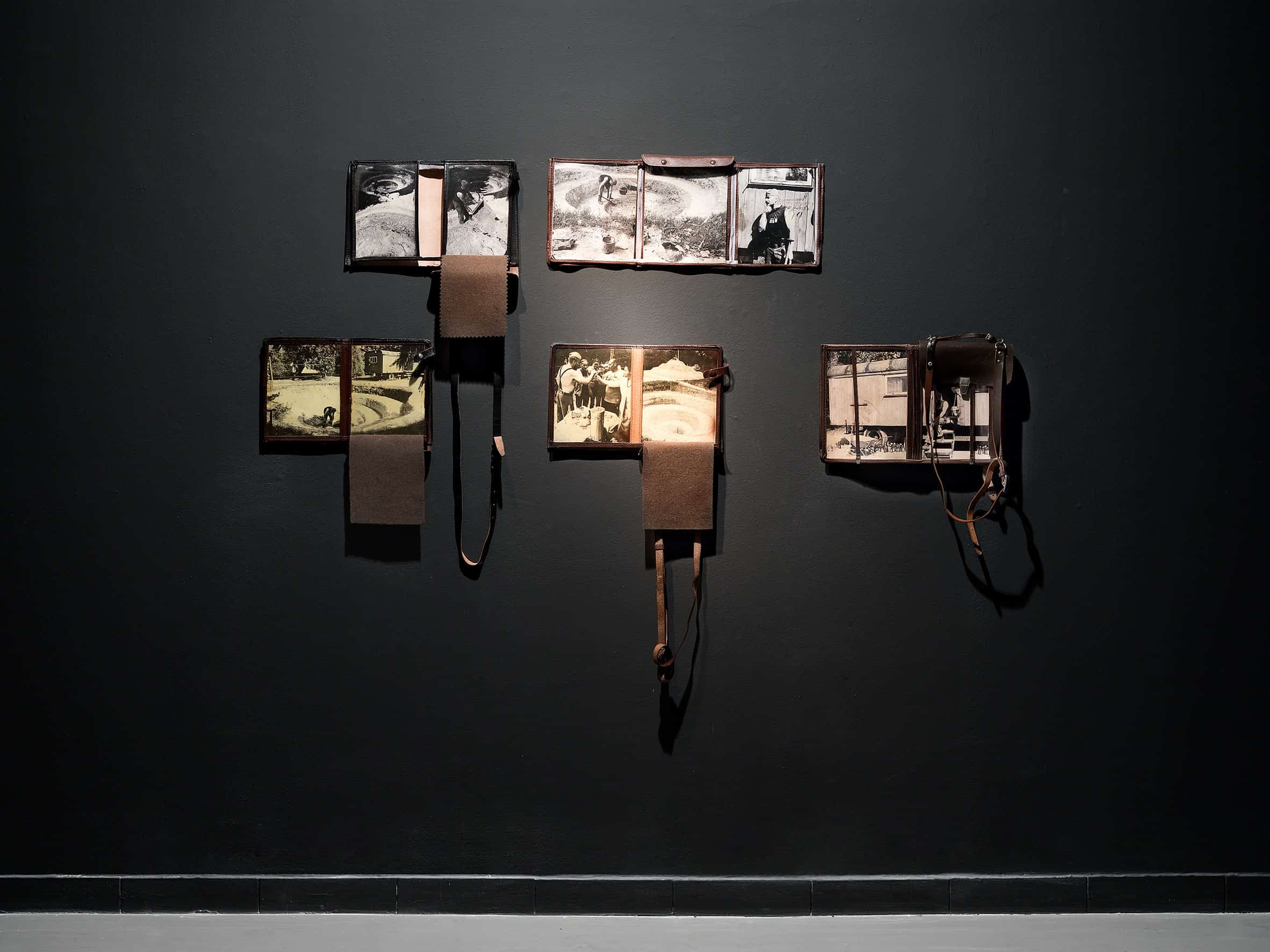
View from the exhibition ‘Operations on places’, ‘+/-‘ Robert Kuśmirowski, photo: Elad Sarig, courtesy of the Petach Tikva Museum of Art
What is more, Bałka’s video was complemented by “Dispositions” (2001-2010), a performative art project and a series of photographs by Adina Bar-On. The exhibition in Petah Tikva featured a photographic documentation of her performance in Lublin from the year 2009 inspired by the horrifying coverage of the war in Yugoslavia broadcast on the news day in, day out. While guiding a group of people through the Old Town in Lublin, the artist made various suggestive gestures – woman with a flag, woman in ruins, woman guide, woman in a natural scenery. The photographs, which portray her strolling along the streets of Lublin, wearing a red dress and a scarf, correspond perfectly with Bałka’s work displayed on the exhibit, its red spots and parallel overtones. The title refers to positioning, attaining and losing one’s position or identity. Despite its initial response to the images of a war-torn Yugoslavia, the performance acquires new meanings in another setting. Performance has always been susceptible to those shifts. Captured on photographs, performance always morphs into a work of art in its own right, a potent visual sign that may encourage a multitude of interpretations years afterwards. Adina’s performance evoked the annals of Lublin’s past. Adina herself comes from a Jewish family. Whether she likes it or not, her performance does pertain to the history of the Holocaust. Once upon a time, these pre-war tenement houses, courtyards and streets had been inhabited by the Jewish community, after all.
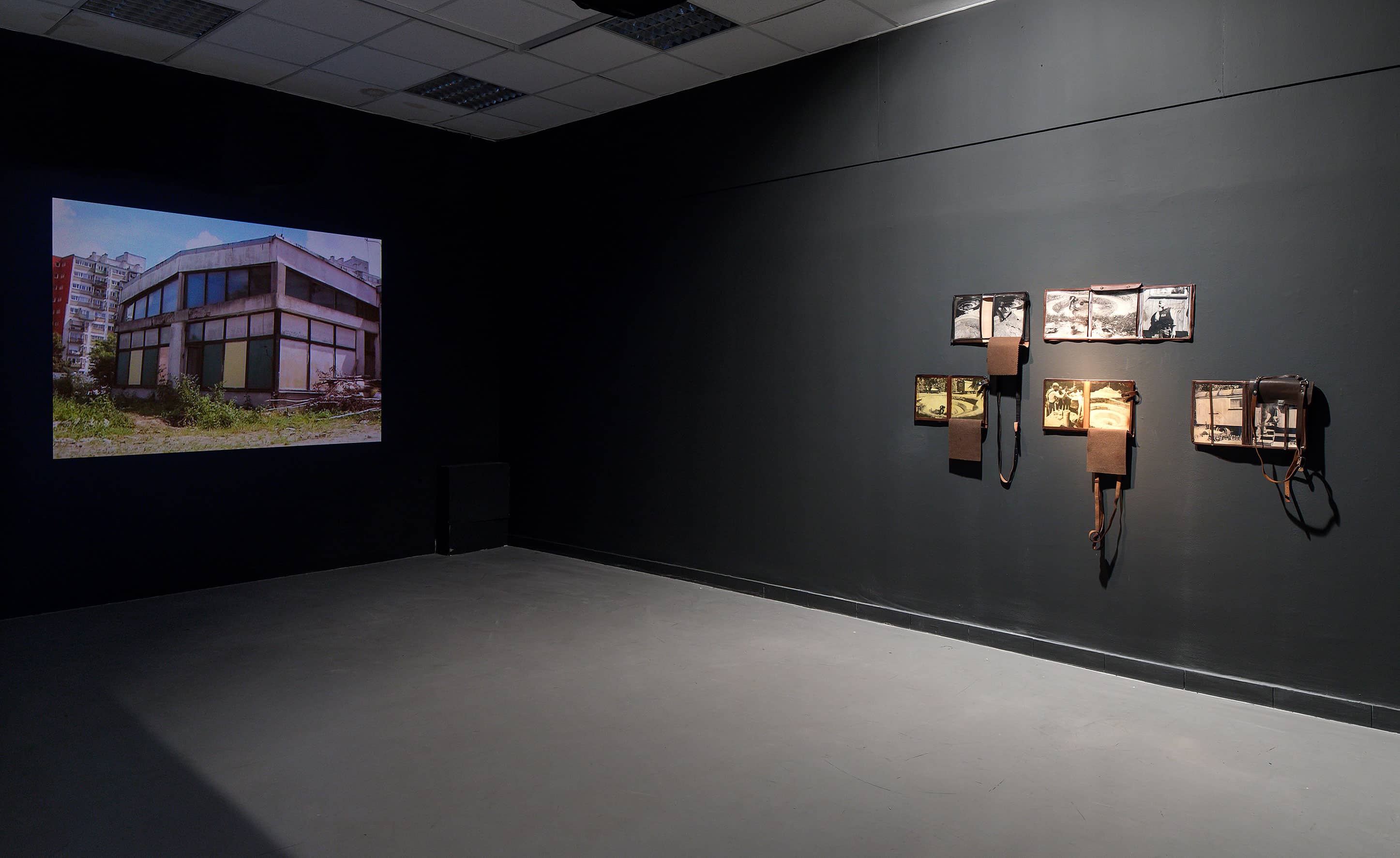
View from the exhibition ‘Operations on places’, on the left: ‘Good Advice’ Cezary Klimaszewski, on the right: ‘+/-‘ Robert Kuśmirowski, photo: Elad Sarig, courtesy of the Petach Tikva Museum of Art
Strong political undertones were also clearly palpable in case of “Good Advice” by Cezary Klimaszewski. The video featured the last stage of preordained demolition of the local center of arts and culture situated in the Juliusz Słowacki District in Lublin designed by Oscar Hansen. The center was replaced by a hideous neo-gothic church that has eviscerated the entire concept of the open form paramount to the project. The construction stirred up strong controversies among the district’s residents. Klimaszewski’s video emphasized the issues that keep plaguing the Polish cities – dismissed and neglected gems of modern architecture, lack of oversight over urban planning, and most notably the political mechanisms and ideology which shape the landscape and population’s living space.
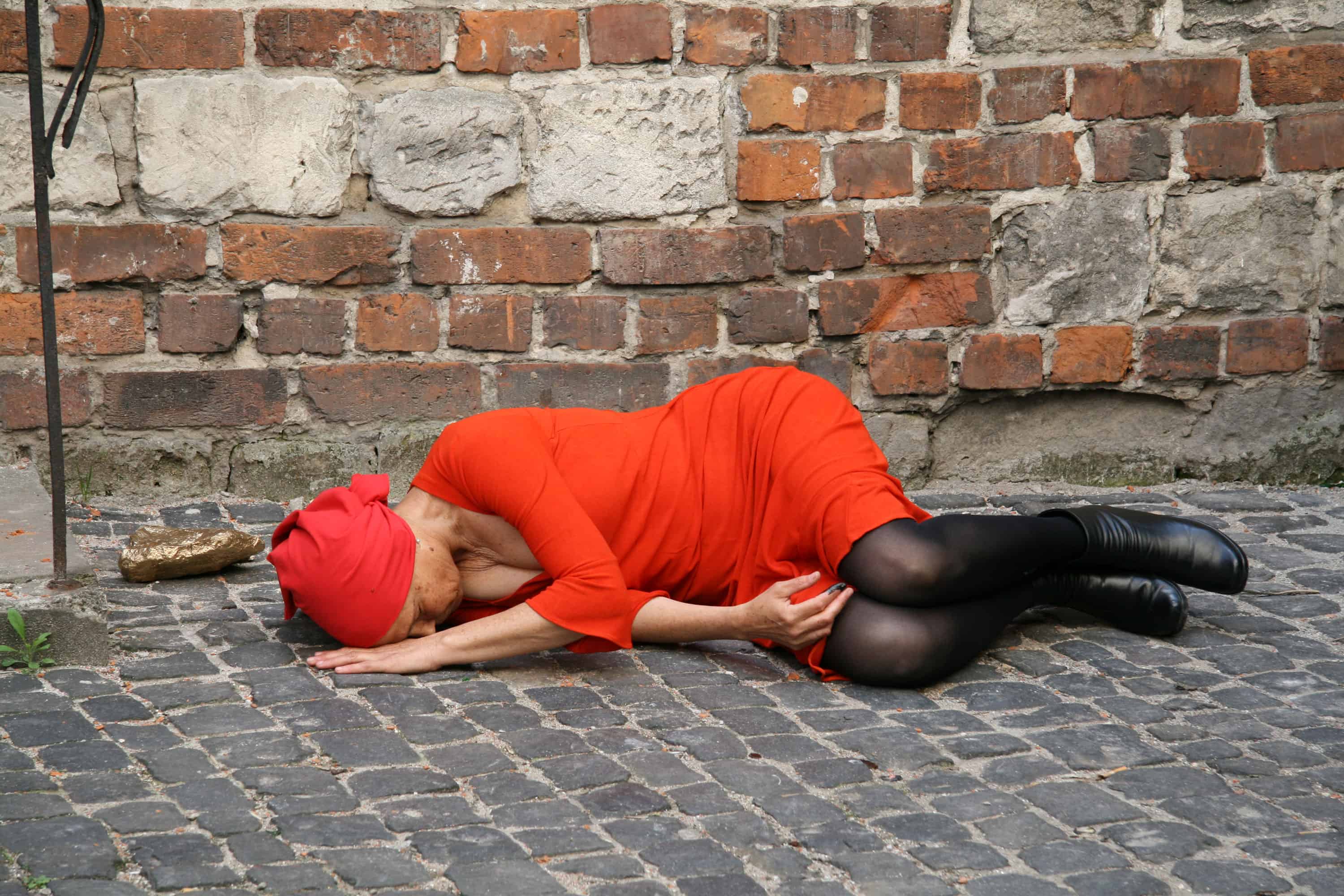
‘Disposition’ Adina Bar-On, photography, courtesy of the artist and Galeria Labirynt
The eponymous operations on places are epitomized most fully by Robert Kuśmirowski’s performance titled “+/-“ that was also exhibited in an exceptional manner. The artist placed the photographs depicting his action in customized old-fashioned leather briefcases and bread bins. Following in the footsteps of land-art artists, Kuśmirowski arranged the public space around him by digging spiraling ditches and heaping sand nearby. As a result, the audience could take a nostalgic journey back in time due to the artist’s props and clothing that used to be worn by blue collar workers in the People’s Poland. Additionally, his different explanations of his action imparted on the passers-by gave rise to the urban legend.

‘Nice Words’ performing at the market of Petach Tikva, courtesy of the artists.
There’s more to the exhibit in Petach Tikva than film recordings of performances that were staged in a previous decade. As if two suns shedding some light onto the dark corners of the gallery space, the girls from “Nice Words” duo managed to bring some joy and humour to the proceedings. They have already performed their flagship happening in several other cities, including Lublin, Bangkok and Petach Tikva. Their performance is based on a simple interaction with passing strangers who are asked to write some nice words on colourful postcards regarding the city they live in. According to the paradigm of socially engaged art practised in the public space, the artist must examine thoroughly the context of a location, familiarize themselves with obscure stories and facts, as well as the issues faced by the local community. Only then is she/he fully capable of running an expose and putting the figurative cat among the pigeons. “Nice Words” duo runs counter to this very principle, since neither of the artists is somewhat ashamed of their own ignorance or the label of tourists. Rarely do we encounter such a child-like innocence, which may even border on naiveté, considering that today’s world seems mired in irony and double entendre. I couldn’t help it but feel that their action bears certain resemblance to the micro-performance of Cezary Bodzianowski who collected leaflets on the streets of Lublin.
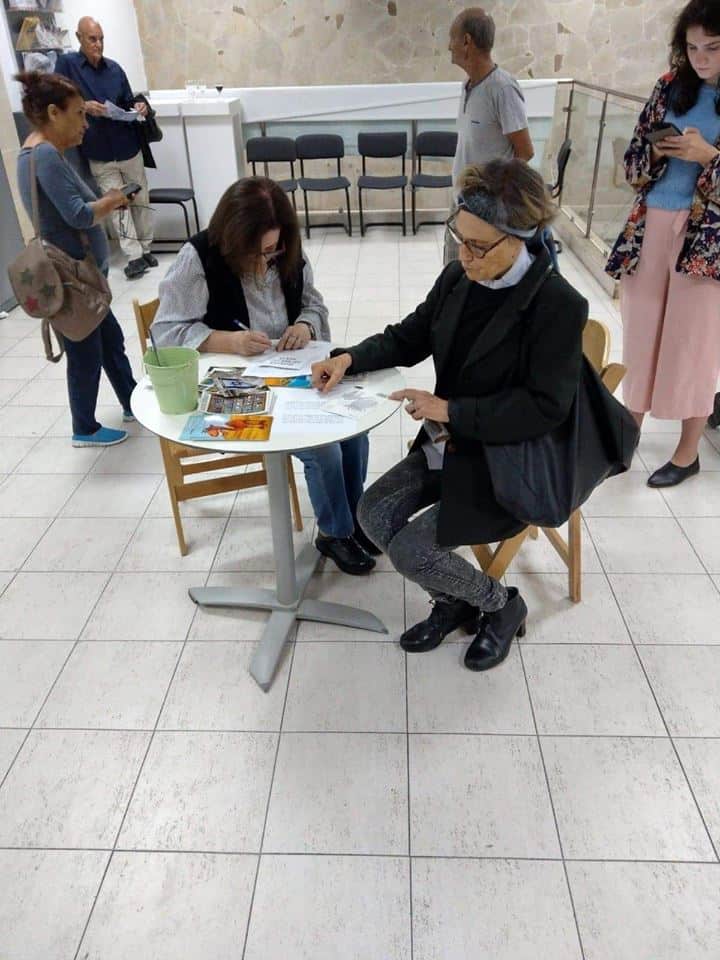
Adina Bar-On writing a postcard with nice words to Petach Tikva, courtesy of the artists.
The selection of works created in the public space of Lublin and displayed on the “Operations on places” exhibit seems rather underwhelming and limited. It clearly fails to showcase the full tapestry of the city, its history, tradition of performance art, topography even. The city of Lublin was distilled into an abstract geometric form of a map, series of photographs portraying its architecture or streets, scraps of forgotten history. We observe the shifting landscape in a constant flux, trying to redefine itself, erase and rebuild itself from scratch. We meet the artists eager to take a scalpel, rip the urban tissue apart, repair and stitch it back together. I wonder whether the native residents of Petach Tikva would find out something more from the exhibit about Lublin and its performance scene. Doubtful. Though you can’t really blame them for not squeezing in an entire city in a carry-on luggage.
‘Operations on Places’
Curator: Waldemar Tatarczuk,
exhibition open until 5 January 2019

View from the exhibition ‘Operations on places’, on the right: ‘MMXVI’ Arutiun Sargsyan, photo: Elad Sarig, courtesy of the Petach Tikva Museum of Art











